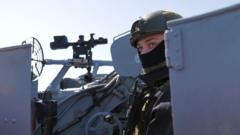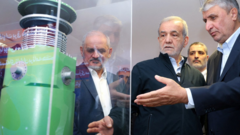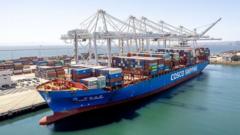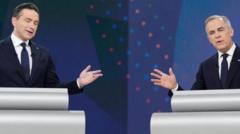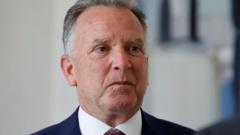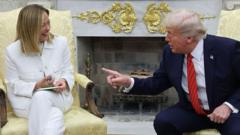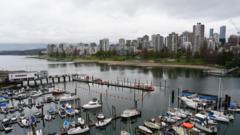The meeting highlights the balancing act between diplomatic relations and significant trade disagreements, particularly on tariffs and trade deficits.
Trump and Modi Seek Harmony Amid Trade Tensions

Trump and Modi Seek Harmony Amid Trade Tensions
During their White House meeting, U.S. President Trump and Indian Prime Minister Modi project unity despite looming tariffs.
In a significant meeting at the White House, U.S. President Donald Trump and India's Prime Minister Narendra Modi struck a conciliatory tone despite the backdrop of potential tariffs that could alter their trade relations. As Prime Minister Modi embraced a strategy seen by other leaders seeking to appease Trump, he praised the U.S. leader’s mantra “Make America Great Again,” creatively applying it to his own country with “Make India Great Again.”
The meeting was intended to signal cooperation, yet it occurred amidst Trump’s intentions to implement reciprocal tariffs on nations, particularly targeting India due to a reported trade deficit. Trump claimed a staggering $100 billion trade gap with India, though this figure was notably inflated, with 2024 estimates closer to $50 billion.
During the interactions, discussions on tariffs were not far from the surface, as Trump has urged his advisers to formulate new penalty levels aligned with the trade dynamics of other nations. With India potentially facing considerable tariff increases, the implications of such measures underscore the delicate nature of the two nations' economic ties.
Further complicating matters, the meeting included technology magnate Elon Musk, who is pushing for smoother business engagements with India through his ventures like Starlink. Such business interests serve as a reminder of the intertwining paths of diplomacy and commercial partnership amid tariff concerns.
As tensions linger over trade policies, the meeting encapsulated the ongoing balancing act for both countries—where diplomacy often hides the friction beneath the surface.


